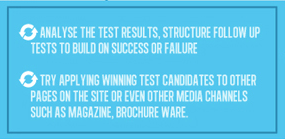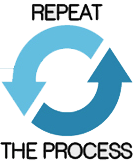
The right & wrong way to do #CRO
Conversion Rate Optimization
This infographic shows a fun path-based look at Conversion Rate Optimization #CRO – essentially the right and wrong way to do it. To get started, let’s look at each path to see whether you’re here to chew bubblegum and kick some ass, or screwing up your optimization efforts.
Make sure you scroll past the graphic, to see dissection of each step.
Infographic by SEO Gadget – Click for full size image.
Now Let’s Dissect it Piece by Piece
The Good Path : the Right Way to Do CRO
Set up funnels
Agree. Once you can ascertain the fall-off points in your flow, you can target them with optimization efforts.
Analytics (or more accurately – user observation)
Agree. Using tools that let you understand click density and user behavior can illuminate areas on your pages that are not being used or seen.
Barriers – Find out why people don’t convert with point of conversion tools
Agree. If you can position a survey tool such as Qualaroo or live chat like Olark, you can find out what is hindering your visitors from becoming fence-sitters to customers.
Go offline and talk to front line employees such as customer service.
Agree. No one understand the frequency of complaints and problems faced by your customers that these teams. Their insight can help with setting priority for feature changes and bug fixes.
Use testimonials and expert reviews.
Agree. Getting an outside opinion can remove the subjective nature of an internal perspective (one based on being too close to the product or brand). At the end of the day, you still need to test any feedback gathered.
Strengthen your advertising: Reward customers with loyalty initiatives, use competitions for engagement, and use free trials and gifts to add value.
Partially agree: Don’t get caught up in cannibalizing your revenue by giving too much away. You’ll be surprised by the impacts of being seen as a product that doesn’t believe in it’s own worth. In my experience, raising prices can help the perception that your product or service is superior.
Wireframe solutions.
Agree: Use visual mockup tools to quickly turn your test hypothesis into a new page layout/concept. Then you can use simple in-house testing methods such as the 6ft test and the 5-second rule, to back up your new ideas. For more detail on these methods, read The Ultimate Guide to Landing Page Optimization (page 24 and 25).
Testing – One accurate measurement is worth more than a thousand expert opinions
Agree: A sad stat is that only 44% of companies use testing tools. If you want to learn more about testing read The Ultimate Guide to A/B Testing.
Review – try applying your winning results to other areas of your site
Agree: A good way to do this is to optimize a landing page, and use your findings to make changes to the areas of your site representative of the messaging and design you have been testing. At Unbounce we did some headline testing during a PPC campaign and after finding a clear winner, will be rolling it out in the next iteration of our homepage.
Add, rinse, repeat.
The lesson here is that no page is perfect, and you should continue testing until your page is optimized to the point where you feel it’s flatlined and you should be focusing on another page.












